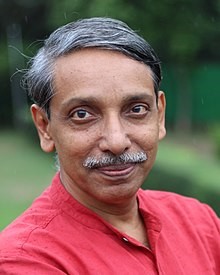
Equi-percentile method for normalisation used for decades in CUET, nothing unfair: UGC chief

The UGC chairman M Jagadesh Kumar has dismissed the complaints over the equi-percentile method used by them for normalising scores in CUET-UG as unfair and pointed out that it has been in use for decades globally.
“It is a fair mechanism where luck plays no role,” asserted the UGC chairman on Monday (July 17).
Results for the Common University Entrance Test (CUET)-UG, the gateway for undergraduate admissions in over 200 universities, were announced on Saturday. Some candidates have been complaining about their scores being brought down due to normalisation.
Necessity for normalised scores
According to Kumar, firstly, people must remember that UGC is required to conduct CUET in multiple shifts in a given subject due to the large number of students participating in the test.
“For example, if the test is in economics, NTA experts prepare multiple economics papers for use in different shifts. Despite our best efforts, the difficulty level of each paper will slightly differ from the other. Therefore, one needs to use normalised scores instead of scores obtained by a student,” Kumar said.
For this purpose, the UGC deploys a scientific method called the equi-percentile method for normalising the difficulty level across different shifts, he said, adding that in the process, the normalised scores for some students will be less than the obtained score; for others, it may increase.
“This method has been in vogue for decades globally and is a statistical procedure for establishing correspondence between scores on different tests. Therefore, there is no luck or unfairness. Students need not worry about it,” he added.
Also read: CUET-UG results out: 22k candidates achieve 100 percentile
CUET-UG exam
The CUET-UG is the second-largest entrance exam in the country in terms of the number of applicants. In its first edition, 12.5 lakh students had registered for the exam and 9.9 lakh submitted applications.
This year the exam was conducted in nine phases between May 21 and July 5 and unlike last year, it was held in three shifts.
In the equi-percentile method, the percentile for each candidate is calculated using the raw marks of the candidate as compared to the raw marks of others in the same session.
Also read: Why and how are CUET-UG scores normalised? UGC chief explains
This is done for every session across multiple days for the same subject. These percentiles are then equated and converted into normalised marks. Sessions with smaller number of candidates are clubbed with bigger sessions.
“In which session they have appeared in a given subject making their performance comparable across sessions. These normalised marks of the candidates, obtained using equi-percentile method, in different sessions in a given subject can be used in the same way we use the raw marks of a conventional single session examination.
“Therefore, in a particular university, if the raw marks of the skill component has certain weightage it can be added to the remaining weightage of the normalised marks to prepare the rank list,” Kumar said.
(With inputs from agencies)


